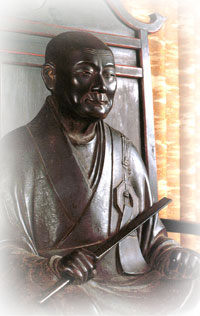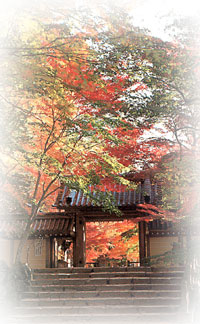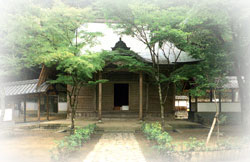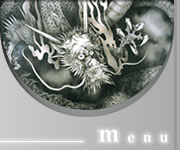Address: 41 Eigenjitakano-cho, Higashiohmi-shi, Shiga-ken, 527-0212 Japan
Tel: 0748-27-0016; Fax: 0748-27-1055

Eigen-ji was founded
in 1361 by the lord of the omi domain, Sasaki Ujiyori
佐々木氏頼 (1326–1370),
with the ascetic Zen master Jakushitsu Genko
寂室元光 (1290–1367) serving as the
founding abbot. Jakushitsu practiced Zen widely in Japan under a number of
masters, notably Yakuo Tokken
約翁徳儉 (1244–1320) of Kennin-ji and Yishan
Yining
一山一寧 (J., Issan Ichinei; 1247–1317) of Nanzen-ji, before traveling in 1320 to China.
There he trained under the famous master Zhongfeng Mingben
中峰明本 (J., Chuho
Myohon; 1263–1323),
then visted a number of masters on pilgrimage before returning to Japan in
1326. In Japan he continued his ascetic, wandering lifestyle until invited
by Sasaki to take up residence at Eigen-ji. Jakushitsu is renowned not only
as an accomplished Zen master but also as one of the best of the Zen poets.
He has been honored with a number of posthumous titles, including Enno Zenji
圓應禪師, by Emperor Go-Kogon
後光嚴 in 1369, and Shoto Kokushi
正燈國師 in 1928.
 During the
disturbances of the Onin War (1467–77) many of the most eminent monks of the
Kyoto Five Mountain monasteries moved to Eigen-ji seeking safer and more
tranquil surroundings, and it was said at the time that “culture is now centered in omi.”
A series of fires during wars in the late fifteenth and sixteenth centuries
reduced Eigen-ji to ashes. In 1643 the Zen master Isshi Bunshu 一絲文守
(1608–1646) became abbot at the request of Emperor Go-Mizunoo 後水尾 (r.
1611–1629), and worked to restore the temple; he is honored as the second
founder.
During the
disturbances of the Onin War (1467–77) many of the most eminent monks of the
Kyoto Five Mountain monasteries moved to Eigen-ji seeking safer and more
tranquil surroundings, and it was said at the time that “culture is now centered in omi.”
A series of fires during wars in the late fifteenth and sixteenth centuries
reduced Eigen-ji to ashes. In 1643 the Zen master Isshi Bunshu 一絲文守
(1608–1646) became abbot at the request of Emperor Go-Mizunoo 後水尾 (r.
1611–1629), and worked to restore the temple; he is honored as the second
founder.
 Eigen-ji has been
head temple of the Eigen-ji branch of Rinzai Zen since the Meiji Period(1868-1912),
with over 120 affiliated temples and a training monastery (sodo 僧堂) for
monks. It is famed for the beauty of it autumn scenery.
Eigen-ji has been
head temple of the Eigen-ji branch of Rinzai Zen since the Meiji Period(1868-1912),
with over 120 affiliated temples and a training monastery (sodo 僧堂) for
monks. It is famed for the beauty of it autumn scenery.



